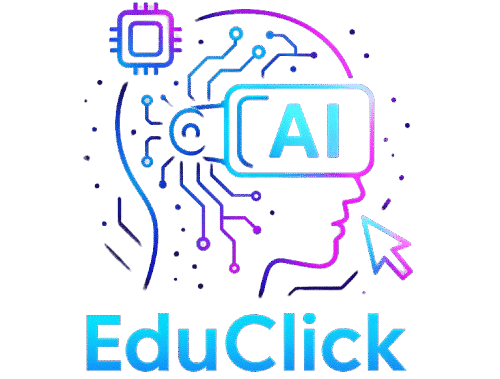The Transformative Role of Blockchain Technology in Credentialing for Digital Education
### Introduction
Imagine a world where your academic achievements are universally recognized, instantly verifiable, and impervious to tampering. For many, this is a dream yet to be realized, but for you, it can become a tangible reality through the revolutionary impact of blockchain technology on credentialing in digital education. Picture yourself in a scenario where your digital diploma from an online course is as credible as one from a traditional university, all thanks to blockchain’s secure and transparent nature.
Consider the peace of mind knowing that your credentials can never be lost, falsified, or questioned. It’s a world where your hard-earned skills are respected and valued, no matter the platform of education. As someone navigating the complexities of the modern educational landscape, you’ve likely faced challenges in proving the validity of your online credentials. The skepticism surrounding digital education can be disheartening, but blockchain technology promises to alleviate those concerns, instilling confidence and authenticity into every certificate you earn.
Reflect on the countless hours invested in acquiring knowledge and skills through digital platforms. The value of these efforts should not be diminished by outdated credentialing systems that fail to keep pace with technological advancements. Blockchain technology offers a new horizon, ensuring that your digital education credentials are not only recognized but celebrated for their accuracy and integrity.
In this article, we delve into how blockchain technology is reshaping credentialing in digital education, exploring practical applications, real-world examples, and the exciting future it heralds for learners like you. Let this exploration inspire you to embrace the potential of blockchain in securing your educational journey.
## Understanding Blockchain Technology in Digital Education
### What is Blockchain Technology?
Blockchain technology is a decentralized digital ledger system that records transactions across multiple computers so that the record cannot be altered retroactively. This system enhances transparency and security, which are crucial in credentialing.
– **Decentralization**: Removes the need for central authority, reducing risk of manipulation.
– **Transparency**: Ensures all credential transactions are openly recorded.
– **Immutability**: Once a credential is recorded, it cannot be altered or deleted.
### The Evolution of Credentialing
Credentialing has evolved from paper-based certifications to digital credentials, yet many systems still lack security and reliability. Blockchain introduces a new layer of integrity and trust.
– **Digital Transformation**: Transitioning from paper to digital certificates.
– **Security Concerns**: Addressing issues such as fraud and data breaches.
– **Blockchain’s Role**: Offering a secure, verifiable alternative.
### Blockchain Applications in Education
Blockchain’s potential extends beyond credentialing, revolutionizing various aspects of digital education.
– **Student Records**: Secure, tamper-proof storage of academic records.
– **Course Evaluations**: Transparent assessment processes.
– **Degree Verification**: Instant verification of qualifications.
### Case Study: MIT’s Blockchain Pilot Program
MIT’s blockchain-based initiative serves as a pioneering example of integrating blockchain in credentialing.
– **Digital Diplomas**: Issuing blockchain-secured diplomas to graduates.
– **Verification Process**: Streamlined and instant credential verification.
– **Global Recognition**: Enhancing the global credibility of online degrees.
## The Impact of Blockchain on Credential Verification
### Verifiability and Trust
Blockchain strengthens the trustworthiness of digital credentials by making them easily verifiable.
– **Instant Verification**: Credentials can be validated instantly by employers.
– **Reduced Fraud**: Eliminates fake credentials through secure verification.
– **Global Validity**: Universal acceptance across borders and industries.
### Enhancing Security in Credentialing
Blockchain’s security features ensure the integrity of educational credentials.
– **Cryptographic Security**: Protects against unauthorized access and tampering.
– **Immutable Records**: Credentials remain unchanged over time.
– **Privacy Protection**: Ensures student data is secure and accessible only to authorized parties.
### Real-World Applications in Education
Educational institutions are increasingly adopting blockchain for credentialing.
– **University Programs**: Implementation in degree and certificate programs.
– **Corporate Training**: Blockchain certificates for professional development.
– **Online Courses**: Enhanced credibility of MOOC platforms.
### Overcoming Challenges in Blockchain Adoption
Despite its advantages, blockchain’s adoption in education faces challenges.
– **Infrastructure Costs**: High initial investment in blockchain infrastructure.
– **Technical Expertise**: Need for skilled personnel to manage blockchain systems.
– **Regulatory Hurdles**: Navigating legal and compliance issues.
## Blockchain’s Future in Digital Education
### Shaping the Future of Education
Blockchain sets a robust foundation for the future of education by addressing key issues in credentialing.
– **Lifelong Learning**: Supports continuous education and skill validation.
– **Interoperability**: Seamless integration across educational platforms.
– **Personalized Learning**: Tailored education pathways based on verified credentials.
### Innovations on the Horizon
Emerging innovations demonstrate blockchain’s potential to transform education.
– **Micro-Credentials**: Recognition of specific skills and competencies.
– **Digital Badging**: Visual representation of achievements on social media.
– **Smart Contracts**: Automating credential issuance upon course completion.
### Educational Institutions Embracing Blockchain
Several institutions are pioneering blockchain adoption, setting benchmarks for the industry.
– **Pioneering Universities**: Leading the charge in blockchain credentialing.
– **Government Initiatives**: Support from governmental bodies for blockchain adoption.
– **International Collaboration**: Cross-border partnerships fostering innovation.
### Blockchain’s Role in Bridging the Digital Divide
Blockchain technology can help bridge educational gaps globally.
– **Access to Education**: Providing recognition to learners in remote areas.
– **Cost-Effective Solutions**: Reducing costs associated with traditional credentialing.
– **Digital Inclusion**: Ensuring equitable access to educational resources.
🎥 Vídeo complementar sobre o tópico
## Practical Applications of Blockchain in Education
### Implementing Blockchain in Institutions
Step-by-step adoption of blockchain can transform educational institutions.
– **Assessment**: Evaluating the needs and potential benefits of blockchain.
– **Planning**: Developing a strategic implementation roadmap.
– **Execution**: Phased deployment and continuous improvement.
### Opportunities for Students and Educators
Blockchain offers numerous opportunities for both students and educators.
– **Empowered Learners**: Control over their educational records and credentials.
– **Enhanced Teaching**: Feedback and assessments powered by blockchain.
– **Career Opportunities**: Increased employability through verified credentials.
### Case Studies of Successful Implementation
Highlighting successful blockchain implementations provides valuable insights.
– **Georgia Institute of Technology**: Integrating blockchain for secure transcripts.
– **Southern New Hampshire University**: Utilizing blockchain for credit transfers.
– **Arizona State University**: Blockchain-enabled student identity verification.
### Practical Challenges and Solutions
Addressing practical challenges is crucial for successful blockchain integration.
– **Scalability Issues**: Ensuring blockchain can handle large datasets.
– **User Adoption**: Training stakeholders on blockchain systems.
– **Technical Barriers**: Overcoming integration challenges with existing systems.

## FAQs About Blockchain Technology in Digital Education
### What is the main advantage of using blockchain for credentialing?
Blockchain offers increased security and transparency, making it almost impossible to forge or alter academic credentials. This reliability builds trust among employers and institutions, ensuring that your qualifications are legitimate and recognized globally.
### How does blockchain improve credential verification?
Blockchain allows for instant and secure verification of credentials without the need for intermediaries. Employers can quickly verify your qualifications, reducing the time and effort spent on background checks and enhancing the efficiency of the hiring process.
### Can blockchain technology help reduce credential fraud?
Yes, blockchain’s immutable ledger system prevents alterations to credentials once they’re recorded. This feature significantly reduces the incidence of credential fraud and ensures that your academic achievements are authentic and verifiable.
### What are micro-credentials, and how does blockchain support them?
Micro-credentials are certifications for specific skills or competencies. Blockchain supports micro-credentialing by securely recording these achievements on a decentralized ledger, allowing you to showcase your skills in niche areas with confidence.
### Are there any educational institutions currently using blockchain?
Yes, several institutions like MIT, Georgia Institute of Technology, and Southern New Hampshire University are using blockchain for various credentialing processes. These institutions demonstrate blockchain’s potential in enhancing the credibility and security of digital education.
### What are some challenges of adopting blockchain in education?
Challenges include high infrastructure costs, the need for technical expertise, and navigating regulatory requirements. However, these challenges can be mitigated through strategic planning, government support, and collaboration with blockchain experts.
### How does blockchain contribute to lifelong learning?
Blockchain enables the recording and verification of all educational achievements over a lifetime, supporting continuous learning and skill development. This ongoing record helps you build a comprehensive and verifiable educational portfolio.
### What role does blockchain play in digital inclusion?
Blockchain facilitates digital inclusion by providing secure, cost-effective credentialing solutions that are accessible to learners in remote or underserved regions. This inclusion supports equitable access to education and recognizes the achievements of all learners.
### Can blockchain reduce the cost of credentialing?
Yes, blockchain can reduce credentialing costs by eliminating intermediaries and streamlining processes. This reduction in costs benefits both institutions and learners, making education more accessible and affordable.
### How does blockchain ensure privacy in credentialing?
Blockchain uses cryptographic security to protect personal data and credentials, ensuring that only authorized parties can access this information. This privacy protection empowers you to control who sees your academic records and when.
## Conclusion
As you embark on your educational journey, envision a future where your achievements are secure, credible, and universally recognized, thanks to blockchain technology. The transformative impact of blockchain on credentialing in digital education offers endless possibilities for enhancing the credibility and accessibility of your academic records.
By embracing blockchain, educational institutions can foster an environment where your skills and knowledge are accurately represented, bridging the gap between traditional and digital education. The future of education lies in technology that supports a seamless, transparent, and equitable learning experience for all.
Now is the time to advocate for blockchain adoption in education, to ensure that your credentials are safeguarded and valued in an ever-evolving digital world. Whether you are a student, educator, or institution, embracing blockchain technology can unlock new opportunities and redefine the landscape of learning.
Join the movement towards a more secure and inclusive educational system, where blockchain technology paves the way for innovation, trust, and lifelong learning. Let your voice be heard in the call for a future where your educational achievements are as indelible as the blockchain itself.
## Key Takeaways
– **Blockchain’s Security**: Provides unmatched security for digital credentials, reducing fraud and enhancing trust.
– **Instant Verification**: Facilitates quick and reliable verification processes for employers and institutions.
– **Global Recognition**: Ensures credentials are universally accepted and recognized across borders.
– **Future of Education**: Positions blockchain as a cornerstone for transformative educational practices.
– **Lifelong Learning**: Supports continuous education by securely recording achievements over time.
– **Digital Inclusion**: Bridges educational gaps by providing accessible and equitable credentialing solutions.
In embracing blockchain for digital education, you’re not just acknowledging the future—you’re actively shaping it. Let this article inspire you to champion innovation in education and advocate for a more secure, inclusive, and credible credentialing system.




